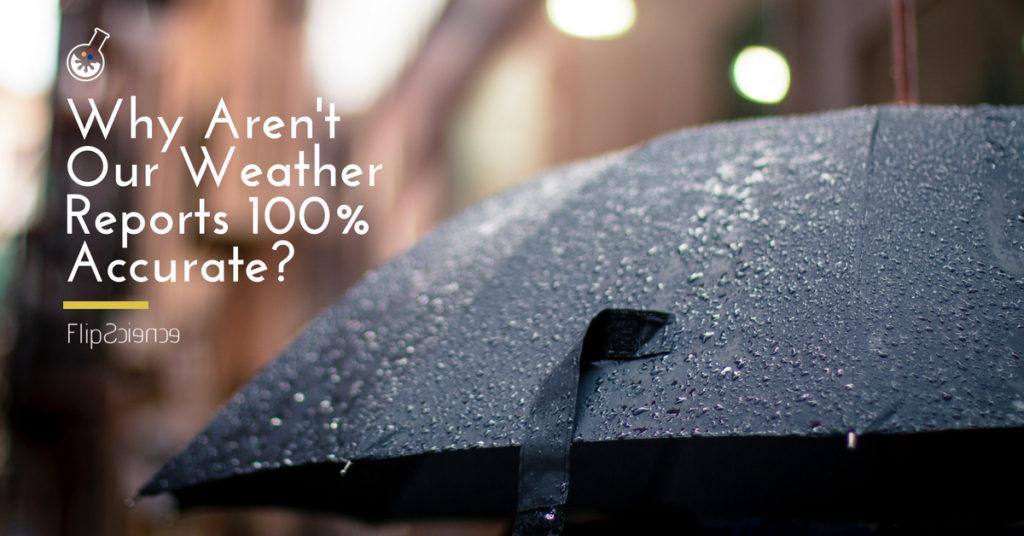It’s that time of the year again when people come home to their families almost every evening with dripping umbrellas, footwear soaked in rainwater from street puddles.
During the Philippines’ rainy season, literal rubber shoes, umbrellas, raincoats, and even shoe raincoats (yes, they exist) are a necessity. Most Filipinos wait for weather forecasts from the Philippine Atmospheric, Geophysical and Astronomical Services Administration (PAGASA) before planning their day. Planning usually involves asking one or more of these questions: “Should I bring an umbrella?” “The streets may be slippery due to the rain later – should I wear high heels?” “I can’t wear my canvas shoes because they’ll get soaked in the rain – should I wear my Crocs instead?”
Nowadays, we get easy access to weather forecasts from different sources. In the news, you have Kuya Kim, ever-ready to discuss the current state of the weather and what to expect in the coming days. On your phone, you have access to Google Now, with weather reports straight from Weather.com. Sometimes, you may even get a text from the National Disaster Risk Reduction and Management Council (NDRRMC) to watch out for floods and heavy rains in your area.
Unfortunately, while these are undoubtedly helpful, there are still instances where you just end up being utterly disappointed (and utterly drenched).
“Weather-weather” lang ba?
Picture this scenario: You, a soon-to-be bride, already planned your summer beach wedding on one of the islands in El Nido. A week before your wedding, you saw the weather forecast for your big day: only a 10% chance of rain, a fairly low percentage. The night before the event, you saw that percentage rise up to 30%. Naturally, this made you feel uncomfortable (and annoyed); your bridesmaid, however, assured you that this was “just a probability,” and that there’s really nothing to worry about. On the day of your wedding, the morning started out just fine. Come afternoon, however, just as you were about to say your “I dos,” an unmistakable “boom” resounded across the sky. In an instant, 400 or so guests were soaking wet, forced to find relief under tarps and inside the island’s restaurant.
At this point, your wedding’s effectively ruined — just like all the planned trips, dates, and outdoor activities of other people experiencing an equally severe downpour at that very moment.
Since time immemorial, we have tried to grasp how nature works (and how we can make it work for us). Our ancestors, thanks to their 24/7 interaction with the environment and all of its dangers, were forced to determine patterns to illustrate how nature works, whether in terms of the seasonal changes that influenced crop yield or the various phases of the moon that affected the size of their daily catch.
In fact, we have already developed methods through which we can predict the likelihood of certain events happening.
Rain? What are the odds?
When tossing a coin, for instance, we asssume that there’s a 50-50 chance of the result being either heads or tails. In rolling a six-sided die, we say that there’s a ⅙ chance for each face to come out on top. These events occur independently from one another. A single coin toss or dice roll does not affect the outcome of succeeding tosses or rolls.
To illustrate: A streak of four heads does not mean that the next toss would automatically yield the same result. In other words, the odds that the next toss would either either heads or tails remain the same. If you were to do 1,000 tosses, the results would likely show a 50-50 distribution between heads and tails. These are examples of classical randomness, wherein the results of individual events cannot be predicted, and are totally random. In these instances, you only know the chances of a certain outcome coming to pass. However, by observing the distribution of outcomes within the collection of the individual events (such as the aforementioned 1,000 tosses), you can make a reasonable prediction, and thus get a clearer picture.
This type of prediction, however, is extremely limited. First, the real world always presents conditions that put erroneous variables into play. Even a one-peso coin cannot be perfectly “fair,” as the results may depend on how it was manufactured, or which face was on top when it was tossed. To add, it bears repeating that these events occur individually; the odds always “reset” every single time.
In nature, however, this is not how it works.
Chaotic randomness: Weather, whenever, whatever
All things in nature, as well as their corresponding events, are connected to one another. This is where chaotic randomness comes in.
In chaotic randomness, one can assess and predict the results of each individual event. However, there are so many events and elements interacting with one another that even a minor change can drastically affect the outcome. Unlike classical randomness, it considers how a single factor can lead to massive changes in a system, whether in economics, earthquakes, or even the weather.
In 1961, American meteorologist Edward Lorenz wanted to create weather models based on a set of values from his computer. A problem arose when he received a printout of the numbers. To minimize paper usage, the printed numbers only displayed three decimal places instead of six. Thus, the initial value 0.349456, for example, was shortened to “0.349”. Still, he ran the computer model again using the new values. Astoundingly, the results greatly differed from his initial forecast. He was surprised that the seemingly miniscule difference — hardly relevant when obtaining data such as air pressure or temperature — had a significant impact on his trial results.
In a paper published two years later, Lorenz concluded that “in view of the inevitable inaccuracy and incompleteness of weather observations, precise very-long-range forecasting would seem to be nonexistent.” Thus was born the butterfly effect: theoretically and metaphorically, the flap of a butterfly’s wings in Brazil could set off a tornado in Texas.
The idea that small changes in initial conditions could change outcomes is not foreign to our ears. After all, there are countless fictional stories about how a peasant performed an act of kindness to a beggar, leading to him or her being rewarded later on by the downtrodden fellow (who was actually a wish-granting fairy in disguise).
Methods of measuring meteorological misbehavior
Traditional weather predictions use observations made such as atmospheric pressure, temperature, wind speed, wind direction, humidity, and precipitation. Computers process the data and generate simulations. These simulations show the result of interactions between the new and existing variables, with respect to the most recent forecast. However, this method does not take chaos into account, and usually leads to unreliable predictions for additional days. This means that weather forecasting for one or two days may be accurate, but becomes less reliable when attempting to predict beyond five days.
The inherent shortcomings of weather prediction have not hindered human beings, though. In fact, we have made significant strides in weather prediction over the past few decades.
Now armed with the knowledge that chaos exists, today’s forecasters use a different method of weather prediction. They run an ‘ensemble’ of models, with each model having slightly different starting conditions. They would then group all the predictions, study the results, and use them to make probabilistic forecasts.
As Brian Clegg states in his book Dice World:
“If, for example, there were 50 runs of the model with slightly different starting conditions, each as likely as the next, and 30 of them predicted rain, but 20 said that it would remain dry, you could say there was 60 percent chance of rainfall.”
This method, called ensemble forecasting, allows meteorologists to predict the weather’s tendency to misbehave. If all predictions for all models look the same, the weather is likely to “behave.” Conversely, if there are predictions that are significantly different, the weather is expected to “misbehave.”
Will we ever perfectly predict the weather?
Today, ensemble forecasting has become a staple for weather forecasters. With its set of computed predictions, it provides a range of all the plausible outcomes with their varying degrees of likelihood. Its effectiveness, however, depends on the quality of the ensemble. Quality refers to the proper representation of the possible uncertainties which can drastically change the outcome.
One can say that we can never predict the weather with 100% accuracy. In spite of all the advancements in forecasting methods (including the use of Doppler radars to monitor weather conditions), chaos will always find a way to mess things up, thus making perfect weather forecasts an impossibility.
With this in mind, we should accept that surprise rain showers, tornadoes, or thunderstorms are, in fact, the norm. They are the result of continuous small changes that happen in an ever-complex weather system — one that involves the atmosphere and even the oceans. Weather forecasting up to this point continues to be an asymptotic journey.
In time, our weather reports will be more accurate; however, it is highly unlikely that they will ever be 100% certain. At the end of the day, the most logical course of action is to expect the worst.
And, of course, to bring an umbrella. –MF
Cover photo: Adrianna Calvo
REFERENCES
- Clegg B. 2014. Dice World: Science and Life in a Random Universe. London: Icon Books
- Ms. 2013. New paper finds the same climate model produces different results when run on different computers. THE HOCKEY SCHTICK
- Slingo J, Palmer T. 2011. Uncertainty in weather and climate prediction. Philos Trans A Math Phys Eng Sci. 369:4751–4767. doi:10.1098/rsta.2011.0161
- Weather forecasting. ScienceDaily. [accessed 2018 Jun 17]. https://www.sciencedaily.com/terms/weather_forecasting.htm
- Why can’t scientists accurately predict the weather? 2010 Jul 7. HowStuffWorks. [accessed 2018 Jun 17]. https://science.howstuffworks.com/nature/climate-weather/atmospheric/scientists-predict-weather.htm
Author: Rafael Ambag
A science kid at heart, Paeng aims to spark the interest of the common man in science through science journalism and organizing science camps for elementary children. He is an incoming freshman under UP Diliman’s BS Molecular Biology and Biotechnology program.







